
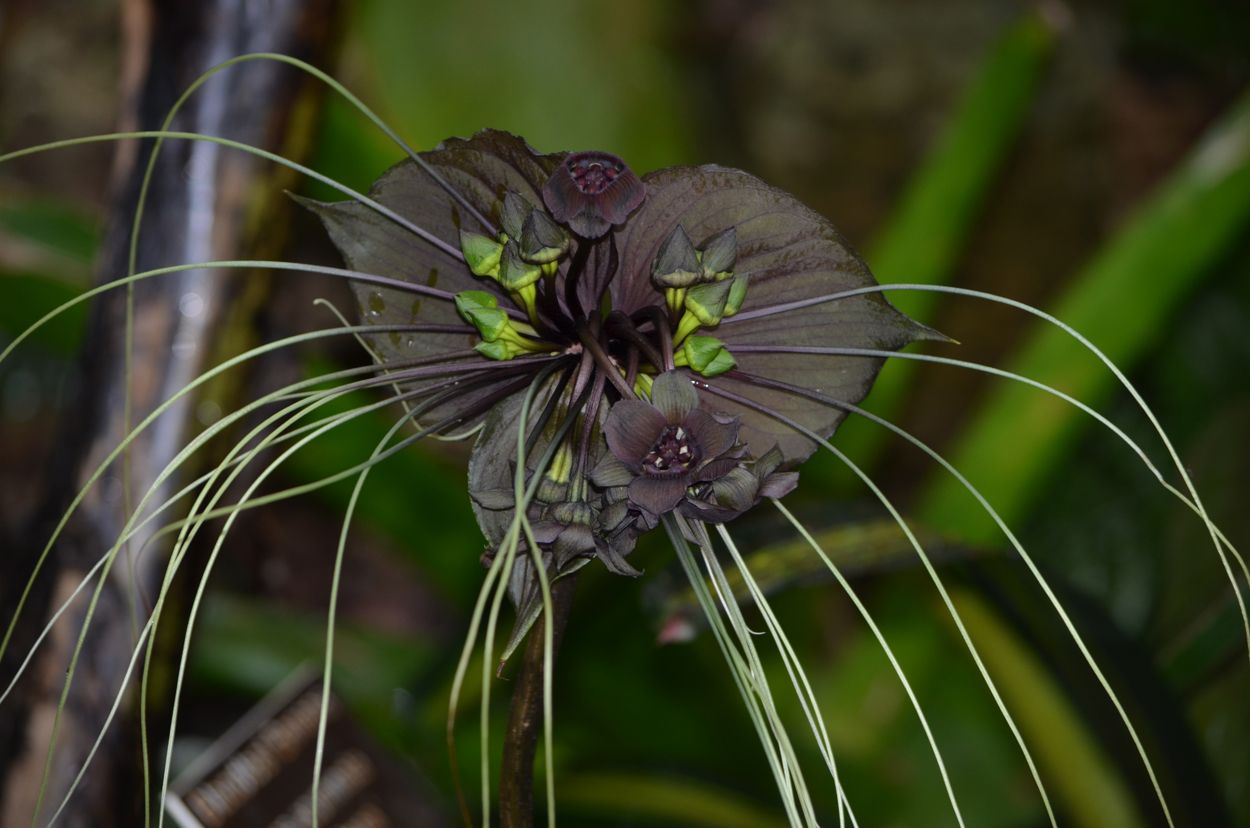
Black bat flower (Tacca chantrieri)
The Black Bat Plant is a very unusual plant from the yam family (Dioscoreaceae), grown for it’s bizarre flowers. It’s found naturally in Southern China, India and South-East Asia. This plant is distinctly tropical. It won’t handle prolonged cold periods and may suffer during periods of low humidity. Fortunately though, Black Bat Plant does grow quite well in Brisbane gardens, as long as it’s in a frost-free area. It’s larger cousin the White Bat Plant (Tacca integrifolia) is much more sensitive and may need winter protection, even in South-East Queensland.
Black Bat Plant is a true shade lover. It grows naturally in the damp and dark under-story of tropical rainforests. Replicate this environment in the garden by growing it under the shade of trees. Alternatively, Bat Plants will need to be grown under shade cloth (50-75% cut) as they won’t handle much direct sun. We don’t recommend this plant for indoors, but it may be possible in the right environment.
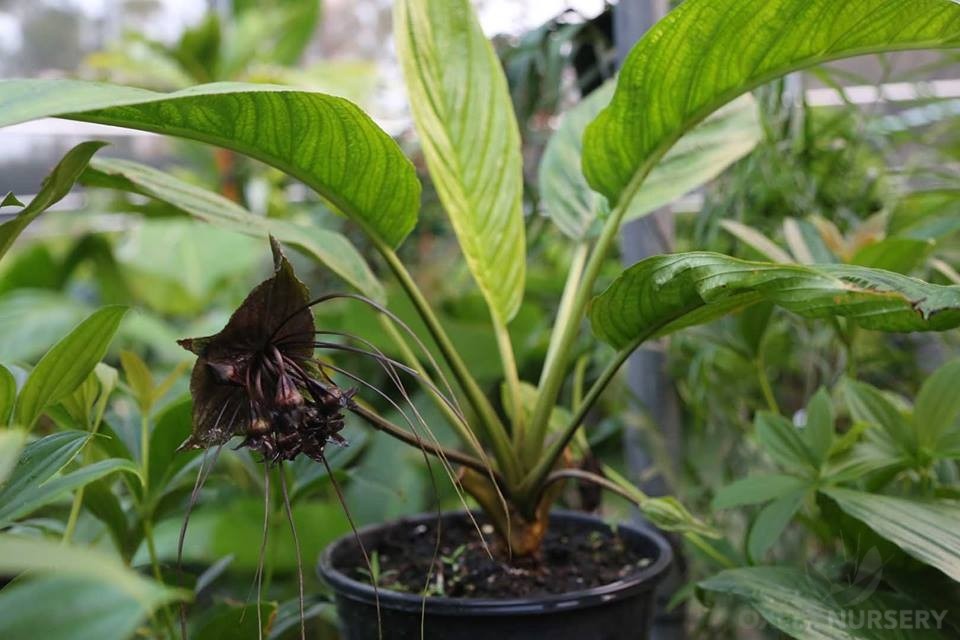
As well as shade, Black Bat Plants need good soil and regular moisture. They can be tricky to grow, so ensure your soil is well draining and regularly composted. Provide regular water in the hot months but allow them to dry out somewhat in winter, especially when it’s cold. Fertilize regularly and lightly during the growing season.
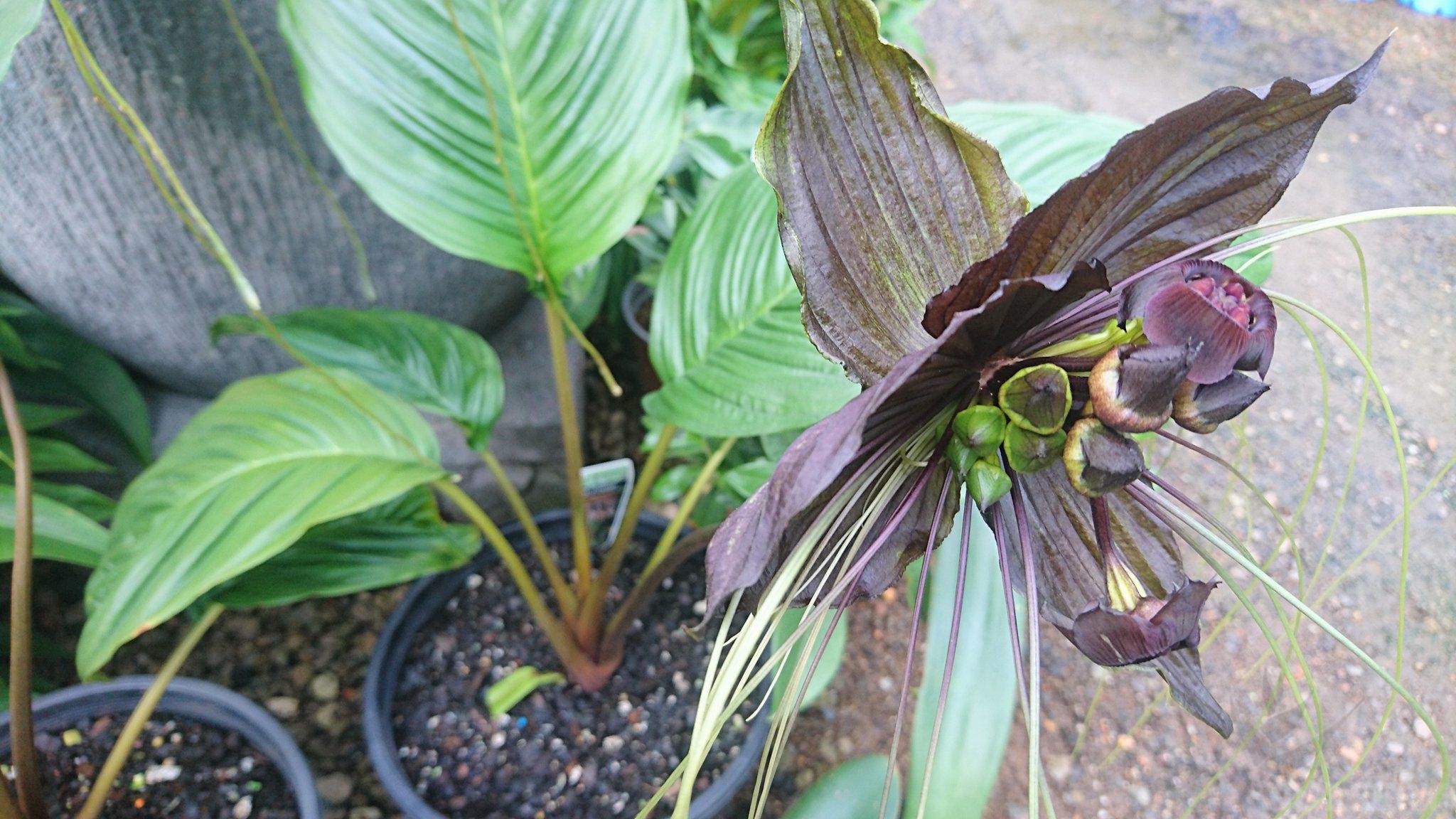
Black Bat Plants need high humidity to grow at their best. Plant in a humid microclimate around other plants. Leaves may burn at the margins during spells of dry air. Bat Plants suffer few pest and disease issues. Look out for mealy bug at the end of summer. Plants kept too damp and cold will be susceptible to root rot and other fungal diseases.
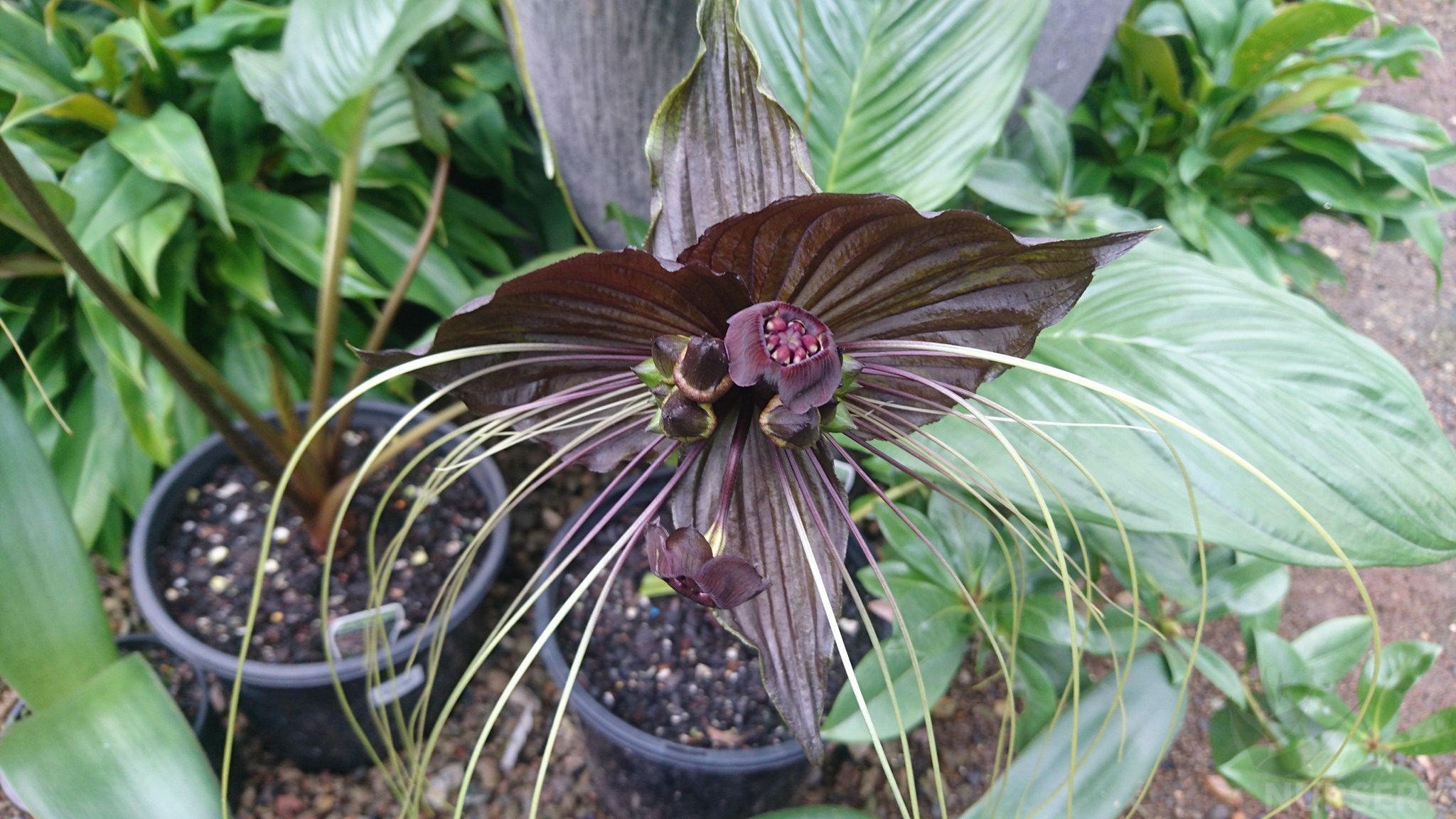
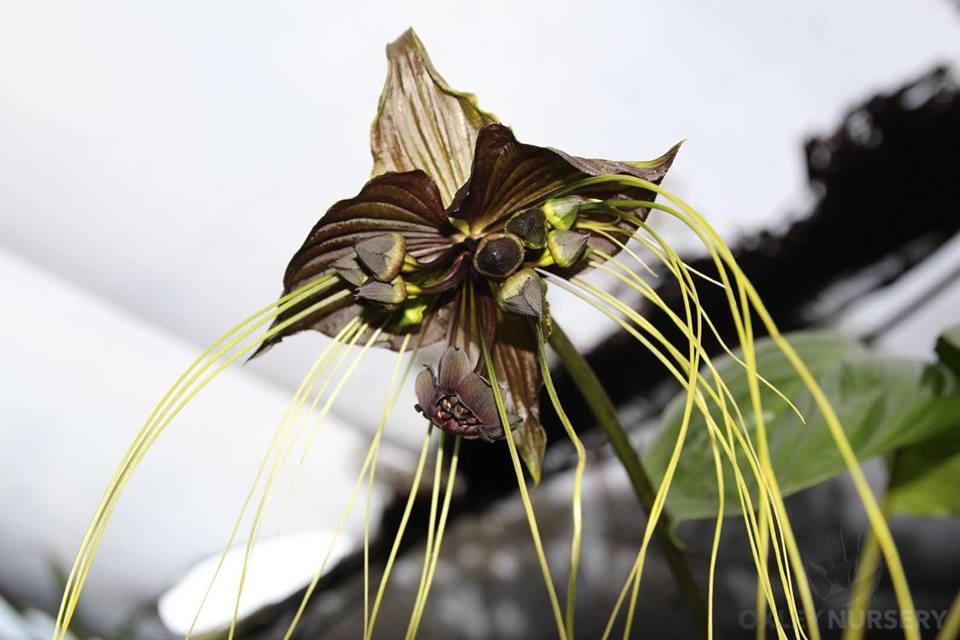
Recommended Videos
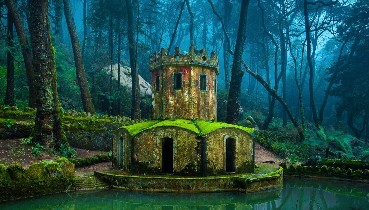 28 Breathtakingly Beautiful Places That Humans Left Behind2577 views
28 Breathtakingly Beautiful Places That Humans Left Behind2577 views 10 Photos of Hottest Food Vendor Taiwanese Girl Viral on Social Media2200 views
10 Photos of Hottest Food Vendor Taiwanese Girl Viral on Social Media2200 views-
Advertisements
 20 Of The Most Beautiful Deer Photographs606 views
20 Of The Most Beautiful Deer Photographs606 views This beauty is a digitalis campanulata (foxglove).4578 views
This beauty is a digitalis campanulata (foxglove).4578 views A Gorilla With A Pink-White Finger Because Of Lack Of Pigmentation On Her Hand48 views
A Gorilla With A Pink-White Finger Because Of Lack Of Pigmentation On Her Hand48 views 10 Natural Ways to Build Healthy Bones747 views
10 Natural Ways to Build Healthy Bones747 views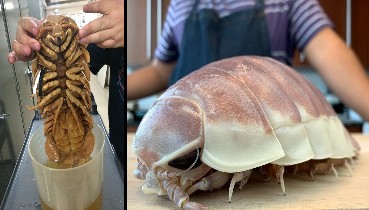 Giant Isopod260 views
Giant Isopod260 views Forbidden Archeology: The Mysterious Egyptian Tablet That Is Similar To An Aircraft Control Panel172 views
Forbidden Archeology: The Mysterious Egyptian Tablet That Is Similar To An Aircraft Control Panel172 views



